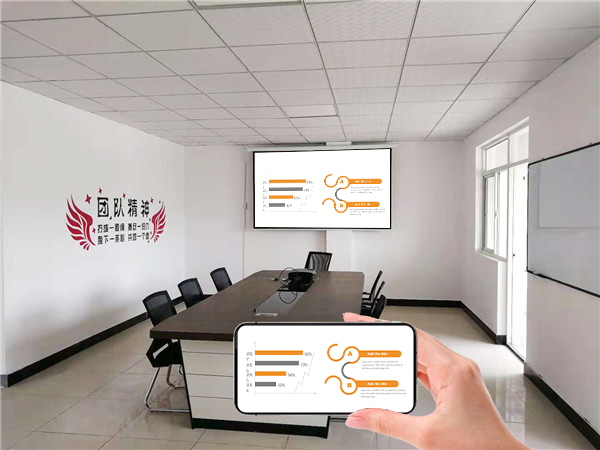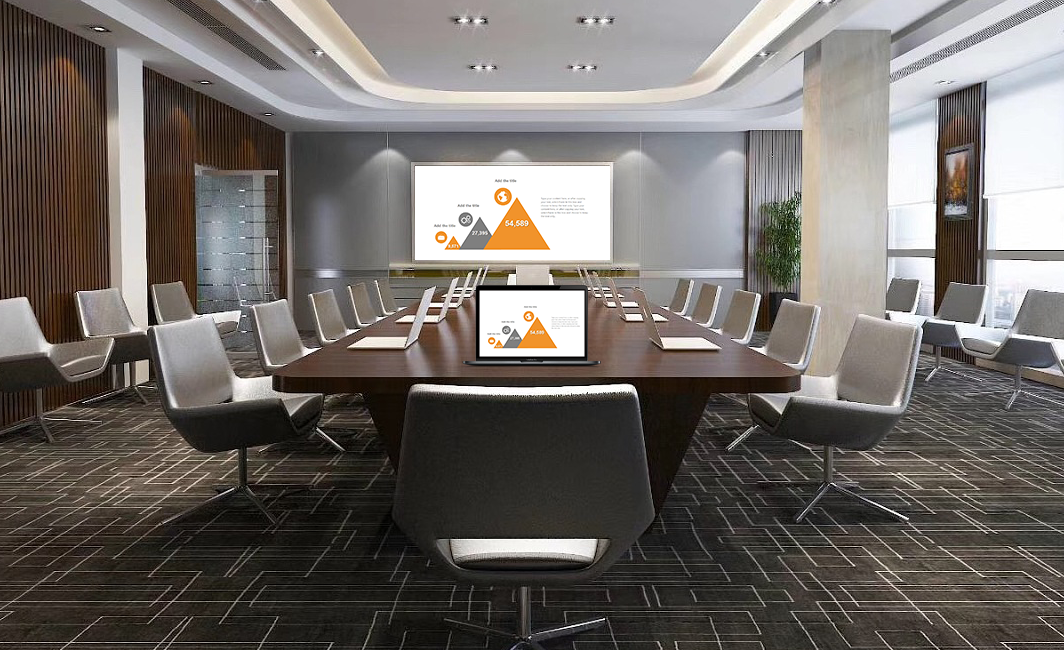Miracast Solution: A Cross-Device Wireless Mirroring Interconnection Solution
The Miracast solution is based on the Wi-Fi Alliance’s wireless display standard. Combined with proprietary optimization algorithms, it achieves wireless mirroring from devices like phones, tablets, and computers to large screens. It can connect directly without a network, providing a stable, high-definition screen synchronization experience for scenarios such as meeting presentations, educational interactions, and home entertainment, allowing small-screen content to be fully displayed on a large screen.
Core Technology Advantages
- All-Device Protocol Adaptation: It natively supports the Miracast protocol, and deeply optimizes the connection link for Android and Windows devices, solving compatibility issues between different brands of devices. Through Bijie’s hardware acceleration technology, the Miracast connection success rate for older Android phones and Windows 7 computers is increased to 99%, avoiding common problems in traditional solutions such as being unable to find a device or frequent connection interruptions.
- Low-Latency Mirroring Transmission: It uses 5GHz band priority transmission technology and optimizes encoding efficiency based on the Miracast standard to achieve real-time mirroring of 1080P Full HD quality. Transmission latency is controlled within 50ms, and the synchronization error between screen operation and large screen display is <30ms. Even when devices are running large applications or games, the screen remains smooth without ghosting, meeting the needs of dynamic content display.
- Direct and Network Dual Mode: It supports both “point-to-point direct connection” and “local area network networking” modes. In a non-network environment, devices automatically establish a dedicated Wi-Fi channel to achieve Miracast mirroring. When there is a network, it can connect to the existing local area network without occupying extra bandwidth, accommodating the usage needs of both mobile and fixed locations, and increasing deployment flexibility by 60%.
Key Function Design
- Complete Screen Mirroring: It achieves a complete synchronization of the device’s screen content, including the operating interface, dynamic videos, and audio signals. APP operations on a phone and software running on a computer can be presented on the large screen in real time. When demonstrating an app’s functions in a meeting, there is no need to switch the mirroring mode; the large screen can fully display the operation process, increasing communication efficiency by 40%.
- Two-Way Touch Interaction: It supports a large screen’s reverse control of the mirrored device. You can directly operate documents on a phone or zoom in on design blueprints on a computer from the conference screen. The operational commands are sent back through the Miracast channel in real time, with a latency of ≤40ms, eliminating the disjointed feeling of “looking down at the small screen and up at the large screen.”
- Multi-Device Carousel Switching: It supports up to 8 devices in a queue waiting for a Miracast connection. You can switch the current mirrored device using a remote control or a touch screen. The switching process has no black screen or lag, with a response time of <1 second. In a teaching scenario, students can take turns mirroring their tablet content to the classroom’s large screen, increasing group presentation efficiency by 50%.

Scenario-Based Implementation Solutions
(I) Business Meeting Scenarios
- Mobile Presentations: In a client’s office, a salesperson can use an Android phone to directly mirror a product demonstration video via a Bijie Miracast terminal without a network connection. The large screen simultaneously displays the phone’s operation process, and the client can zoom in to view details using the touch screen. Midway through, they can switch to mirroring a proposal PPT from a Windows laptop. The carousel switching is fast and smooth, upgrading the business negotiation experience.
- Ad-Hoc Meetings: In a non-network outdoor venue, a Bijie portable Miracast mirroring box can be used to connect to a projector. Participants’ phones and computers can connect directly via Miracast to mirror content, enabling discussion of proposals and annotation of documents. This eliminates the limitations of cables and networks, shortening meeting preparation time by 70%.
(II) Smart Education Scenarios
- Interactive Classrooms: A teacher can use a Windows tablet to mirror to the classroom’s large screen via Miracast, displaying the operation process of teaching software in real time, so students can follow along and practice. During a classroom quiz, students can mirror their answer interface from an Android tablet, and the teacher can view the answers on the large screen and mark them in real time, increasing classroom interactivity by 60%.
- Skills Training: In vocational education, a teacher can use Miracast from a phone to mirror the steps of operating a machine tool’s control software. The large screen simultaneously displays the button clicks and parameter settings. When a student is operating, their tablet screen can be mirrored to the teacher’s terminal, and the teacher can remotely guide the operational details, improving the effectiveness of training by 50%.
(III) Home Entertainment Scenarios
- Game Interaction: An Android phone can mirror mobile game footage to the TV via Miracast. The latency is controlled within 50ms. Paired with a game controller, you can have an immersive gaming experience on a large screen. Family members can mirror tutorials from a Windows computer to learn skills like baking and crafts together, doubling the fun of interaction.
- Content Sharing: An elderly person can use a simple-to-operate Android tablet to mirror videos of their grandchildren to the TV via Miracast, and the whole family can gather to watch. A child can mirror online courses from a learning tablet to the TV, protecting their eyesight with a large screen. Parents can annotate key content on the TV, creating a stronger family learning atmosphere.
Management and Assurance System
- Centralized Device Management: Administrators can use the Bijie Cloud Platform to view the connection records, operational status, and signal strength of all Miracast terminals. It supports remotely enabling/disabling the Miracast function and setting the maximum number of connected devices, preventing irrelevant devices from occupying resources.
- Secure Connection Control: It uses WPA2-PSK encryption technology to protect Miracast connections. A verification code must be entered for the first pairing. After that, “trusted devices” can be set to connect automatically. It also supports hiding the device name, so it can only be discovered by manually entering the device ID, preventing unauthorized devices from connecting.
- Simple O&M Support: The terminal has a built-in signal detection and automatic repair function. When Miracast connection quality declines, it automatically switches the frequency band or optimizes encoding parameters. It supports online firmware upgrades to continuously fix compatibility issues, reducing the frequency of on-site maintenance, and has a system availability of 99.9%.
The core value of the Miracast solution is to transform wireless device mirroring from an “unstable technical attempt” to a “reliable application tool.” Through deep protocol optimization, scenario-based function adaptation, and a supporting management system, it provides users with a mirroring experience of “connect and use, HD synchronization, and two-way interaction,” redefining the standards of efficiency and stability for cross-device wireless display.